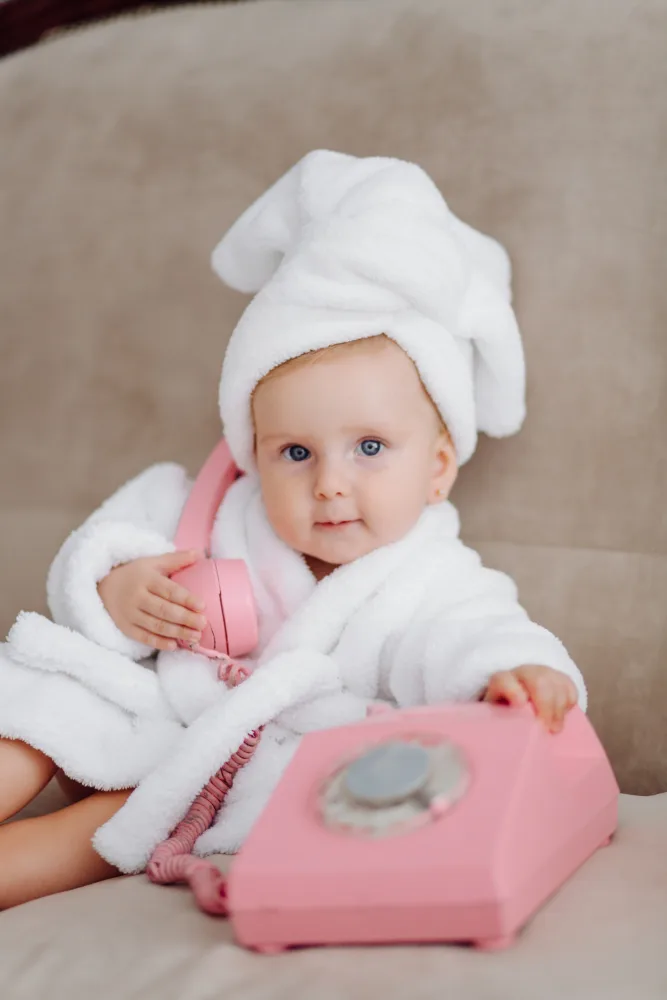Introduction – Caring for Your Baby’s Skin
Welcoming a new baby into your life is a joyous experience, filled with wonder and a steep learning curve. As a parent, you’ll quickly discover that caring for your baby’s delicate skin is an essential part of their overall well-being. This guide aims to equip you with the knowledge and confidence to navigate the world of baby skin care, addressing common concerns and providing practical tips to keep your little one comfortable and healthy.
Newborn skin can present a variety of appearances that may seem unusual at first glance. From tiny white bumps to reddish patches, it’s natural to worry about these unfamiliar sights. Rest assured, most of these conditions are completely normal and require no specific treatment. This guide will walk you through some of the most common skin conditions you might encounter in your newborn, offering explanations and reassurance to ease your mind.
Beyond understanding normal newborn skin variations, you’ll also learn about caring for the umbilical cord stump, a crucial aspect of newborn hygiene. We’ll provide clear instructions on keeping the area clean and dry, as well as identifying potential signs of infection that warrant medical attention.
Bathing your baby is another important part of their care routine. While traditional advice often recommended sponge baths until the umbilical cord heals, many doctors now approve of full baths from the start. We’ll discuss bathing frequency, proper cleaning techniques, and tips for ensuring a safe and enjoyable experience for both you and your baby.
Diaper rash is a common concern for parents, causing discomfort and distress for your little one. We’ll delve into the causes of diaper rash, including different types and potential irritants. You’ll learn effective prevention strategies and treatment options to keep your baby’s bottom happy and healthy.
This guide also covers other common skin conditions like cradle cap and eczema, offering guidance on managing these issues and providing relief for your baby. By understanding the causes and treatments for these conditions, you can confidently address your baby’s skin care needs and ensure their comfort.

Newborn Baby’s Skin – Understanding the Unexpected
Your newborn’s skin may exhibit a range of appearances that might seem surprising or concerning at first. However, many of these are simply normal variations of newborn skin and will resolve on their own without any intervention. Let’s explore some of the most common conditions you might encounter:
Baby Acne: This presents as a red, pimply rash on your baby’s face, often appearing within the first few weeks of life. It’s caused by maternal hormones and usually disappears on its own within a few months. No treatment is necessary, and it’s important to avoid using any lotions or creams on the affected area.
Cutis Marmorata: This condition gives your baby’s skin a marbled appearance, with a pinkish-blue pattern, especially when exposed to cold temperatures. It’s a harmless response to immature blood circulation and will improve as your baby’s circulatory system matures. Keeping your baby warm and avoiding sudden temperature changes can help minimize the marbling effect.
Erythema Toxicum: This common rash appears as splotchy red patches with small white or yellow bumps in the center. It can appear anywhere on your baby’s body and often comes and goes during the first few weeks of life. The cause is unknown, but it’s completely harmless and requires no treatment. The rash will gradually disappear on its own.
Milia: These tiny white bumps, often found on a newborn’s face, are simply blocked skin pores. They are very common and will clear up on their own within a few weeks. Avoid picking or squeezing them, as this can irritate the skin and increase the risk of infection.
Mongolian Spots: These flat, bluish-gray birthmarks are commonly found on the lower back and buttocks of babies with darker skin tones. They are completely harmless and usually fade over time, although they may not disappear entirely.
Vernix: This white, greasy substance covers your baby’s skin in the womb, providing protection and lubrication. Some babies are born with a lot of vernix still on their skin, which is perfectly normal. It can be gently wiped off or left to absorb naturally. As the vernix disappears, your baby’s skin may peel slightly, which is also a normal process.
Caring for the Umbilical Cord – A Delicate Transition
The umbilical cord, once a lifeline between you and your baby, now requires special care as it dries and eventually falls off. This usually happens within 1 to 2 weeks after birth. During this time, keeping the cord stump clean and dry is essential to prevent infection.
Cleaning the Cord: Water is all you need to clean the umbilical cord stump. Simply dampen a clean cotton swab or washcloth with water and gently clean around the base of the cord. Avoid using alcohol or any other antiseptic solutions unless specifically instructed by your doctor, as these can irritate the skin and slow down the drying process.
Keeping it Dry: Moisture can create a breeding ground for bacteria, so it’s crucial to keep the cord stump dry. After cleaning, gently pat the area dry with a clean towel. Fold down the front of your baby’s diaper to prevent it from rubbing against the cord and trapping moisture. Exposing the cord stump to air can also help it dry faster.
Signs of Infection: While rare, infections can occur at the umbilical cord site. Be vigilant and contact your doctor immediately if you notice any of the following signs:
- Redness and swelling around the cord stump
- Yellow pus or discharge from the cord
- Foul-smelling odor coming from the cord
- Bleeding from the cord (more than a few spots)
- Fever (rectal temperature of 38.0°C or higher)
Remember: Never pull on the cord stump, even if it seems like it’s hanging by a thread. It will naturally detach on its own when it’s ready. With proper care and attention, the umbilical cord will heal without complications, marking a significant milestone in your baby’s transition to life outside the womb.

Bathing Your Baby – A Gentle Approach to Cleanliness
Bath time can be a wonderful opportunity for bonding with your baby while keeping them clean and comfortable. While traditional advice often recommended sponge baths until the umbilical cord stump falls off, many doctors now agree that full baths are safe from the start.
Frequency of Bathing: You don’t need to bathe your baby every day, especially in the early weeks. A couple of times a week is sufficient, with regular cleaning of the face, hands, and diaper area in between. Frequent baths can dry out your baby’s delicate skin.
Creating a Comfortable Bath Environment: Choose a warm room and ensure the bathwater feels comfortably warm to the touch. Gather all your supplies beforehand, including a gentle baby wash, soft washcloths, towels, and a clean diaper. Remove any jewelry that could scratch your baby’s skin and ensure you have a secure hold on your baby throughout the bath.
Bathing Techniques: Use clean water and a soft washcloth to gently wash your baby’s face, ears, and mouth. For girls, wipe the genital area from front to back to prevent the spread of bacteria. For boys, gently wash the penis and surrounding area. Do not attempt to retract the foreskin, as it will naturally loosen over time. Avoid using cotton swabs to clean inside your baby’s nose or ears, as this can push debris further in and cause irritation. Mucus and earwax will naturally work their way out.
Drying and Moisturizing: After the bath, gently pat your baby dry with a soft towel, paying attention to skin folds. If your baby’s skin seems dry, apply a gentle, unscented moisturizer to help keep it hydrated.
Safety First: Never leave your baby unattended in the bath, even for a moment. Ensure the water is not too hot and that your baby is comfortably supported throughout the bath. With a little care and attention, bath time can be a relaxing and enjoyable experience for both you and your baby.

Diaper Rash – Preventing and Treating a Common Discomfort
Diaper rash, also known as diaper dermatitis, is a common skin irritation that affects babies. It appears as redness and inflammation in the diaper area and can cause discomfort and fussiness. Understanding the causes and implementing preventive measures can help keep your baby’s bottom healthy and rash-free.
Causes of Diaper Rash: The main culprit behind diaper rash is prolonged contact with urine and stool. The moisture and irritants in these substances can break down the skin’s protective barrier, leading to inflammation and discomfort. Other factors that can contribute to diaper rash include:
- Infrequent diaper changes: Leaving a wet or soiled diaper on for too long increases the skin’s exposure to irritants.
- Sensitive skin: Some babies have naturally sensitive skin that is more prone to irritation.
- Introduction of new foods: Changes in your baby’s diet can alter the composition of their stool, potentially leading to irritation.
- Yeast infection (Candida): This type of diaper rash often appears as bright red patches with small red bumps and may require antifungal treatment.
Preventing Diaper Rash: The key to preventing diaper rash lies in keeping your baby’s skin clean and dry. Here are some effective strategies:
- Frequent diaper changes: Change your baby’s diaper as soon as it becomes wet or soiled.
- Air time: Allow your baby to go diaper-free for short periods to let the skin air out.
- Gentle cleansing: Clean the diaper area with warm water and a mild, fragrance-free soap during each diaper change. Avoid harsh wipes that contain alcohol or fragrance.
- Barrier creams: Apply a thin layer of petroleum jelly or a zinc oxide cream to protect the skin from moisture and irritants.
- Proper diaper fit: Ensure the diaper fits snugly but not too tightly to allow for air circulation.
Treating Diaper Rash: Most cases of diaper rash can be effectively managed at home with the preventive measures mentioned above. However, if the rash is severe or doesn’t improve, consult your doctor. They may recommend a medicated cream or other treatment options, especially if a yeast infection is suspected
Cradle Cap – A Common Scalp Condition
Cradle cap is a common skin condition that affects babies, appearing as crusty or oily patches on the scalp. While it may look concerning, cradle cap is harmless and usually resolves on its own within a few months.
Appearance and Causes: Cradle cap typically appears as thick, yellowish or brown scales on the scalp. It can also affect other areas prone to oil production, such as the eyebrows, behind the ears, and skin folds. The exact cause of cradle cap is unknown, but it’s believed to be related to overactive sebaceous glands, which produce oil on the skin. It’s not contagious and is not caused by poor hygiene.
Treatment Options: While cradle cap will eventually clear up on its own, there are ways to manage the condition and loosen the scales:
- Gentle washing: Wash your baby’s hair regularly with a mild baby shampoo. Gently massage the scalp with your fingertips or a soft brush to loosen the scales.
- Oil treatment: Apply a small amount of mineral oil or baby oil to the scalp and leave it on for a short time to soften the scales. Then, gently brush or comb the hair to remove the loosened scales.
- Over-the-counter remedies: For more stubborn cases, your doctor may recommend a special shampoo or cream containing salicylic acid or coal tar.
Seborrheic Dermatitis: In some cases, cradle cap may be accompanied by a more widespread skin condition called seborrheic dermatitis. This can cause red, scaly patches on other areas of the body, such as the face, neck, and diaper area. If you suspect your baby has seborrheic dermatitis, consult your doctor for appropriate treatment options.
Eczema – Managing a Common Skin Rash
Eczema, also known as atopic dermatitis, is a chronic skin condition that causes dry, itchy patches on the skin. It’s a common condition in babies and young children, often appearing in those with a family history of allergies or eczema. While there is no cure for eczema, it can be effectively managed with proper care and treatment.
Symptoms and Triggers: Eczema typically appears as dry, red, itchy patches on the skin. These patches can be scaly, bumpy, or even oozing and crusting. Common areas affected include the face, scalp, elbows, knees, and hands. Eczema flare-ups can be triggered by various factors, including:
- Dry skin: Maintaining skin hydration is crucial for managing eczema.
- Irritants: Soaps, detergents, fragrances, and certain fabrics can irritate sensitive skin and trigger flare-ups.
- Allergens: Exposure to allergens such as dust mites, pet dander, pollen, and certain foods can also trigger eczema in some babies.
- Temperature changes: Extreme heat or cold can worsen eczema symptoms.
Treatment and Management: While there is no cure for eczema, several strategies can help manage the condition and reduce flare-ups:
- Moisturizing: Regularly applying a gentle, fragrance-free moisturizer is essential to keep the skin hydrated and prevent dryness.
- Bathing: Limit bath time to 5-10 minutes and use lukewarm water. Avoid harsh soaps and opt for gentle cleansers or bath oils.
- Identifying triggers: Pay attention to potential triggers and try to avoid them. This may involve using hypoallergenic products, keeping the home environment dust-free, and identifying food allergies.
- Medications: Your doctor may prescribe topical corticosteroids or other medications to reduce inflammation and itching during flare-ups.
Long-Term Management: Eczema is a chronic condition, and managing it effectively requires a long-term approach. By working closely with your doctor and implementing a consistent skin care routine, you can help your baby find relief from eczema symptoms and improve their quality of life.
Contact Dermatitis – Identifying and Avoiding Irritants
Contact dermatitis is a skin reaction that occurs when your baby’s skin comes into contact with an irritating substance or allergen. It can cause redness, itching, and discomfort, and identifying the culprit is key to preventing future reactions.
Causes and Triggers: Contact dermatitis can be caused by a variety of irritants and allergens, including:
- Irritants: These substances directly damage the skin’s protective barrier, leading to inflammation. Common irritants include soaps, detergents, saliva, urine, stool, and certain fabrics.
- Allergens: These substances trigger an immune response in sensitive individuals, leading to an allergic reaction. Common allergens include nickel (found in snaps and jewelry), fragrances, dyes, and certain plants.
Identifying the Culprit: Pay close attention to the location of the rash and consider any new products or substances your baby has come into contact with. Common areas affected by contact dermatitis include the face, hands, diaper area, and areas where clothing rubs against the skin. Keeping a diary of your baby’s activities and any new exposures can help identify potential triggers.
Treatment and Prevention: The primary treatment for contact dermatitis is avoiding the offending substance. Once the irritant or allergen is removed, the rash will usually clear up on its own. In the meantime, you can soothe the skin with cool compresses and apply a gentle moisturizer. For more severe cases, your doctor may prescribe a topical corticosteroid cream to reduce inflammation and itching.
Preventing Future Reactions: Once you’ve identified the trigger, take steps to avoid future exposure. This may involve switching to hypoallergenic products, using fragrance-free detergents, and choosing clothing made from natural fibers. If your baby has a known allergy, be vigilant about reading labels and informing caregivers about the allergy.
Heat Rash – Keeping Your Baby Cool and Comfortable
Heat rash, also known as prickly heat or miliaria, is a common skin condition that occurs when sweat glands become blocked, trapping perspiration under the skin. It appears as small red bumps or blisters, often in areas where sweat accumulates, such as the neck, chest, back, and diaper area.
Causes and Triggers: Heat rash is primarily caused by overheating and excessive sweating. It’s more common in hot, humid weather and can also occur if your baby is overdressed or bundled up too tightly. Other factors that can contribute to heat rash include:
- Immature sweat glands: Newborns and young babies have immature sweat glands that are more prone to blockage.
- Fever: A fever can cause sweating and increase the risk of heat rash.
- Certain fabrics: Synthetic fabrics that trap heat and moisture can worsen heat rash.
Treatment and Prevention: The best way to treat heat rash is to keep your baby cool and dry. Here are some helpful tips:
- Dress lightly: Choose loose-fitting clothing made from breathable fabrics, such as cotton. Avoid overdressing your baby, especially in warm weather.
- Cool environment: Keep your baby in a cool, well-ventilated room. Use a fan or air conditioning if necessary.
- Cool baths: Give your baby lukewarm baths to help soothe the skin and reduce sweating.
- Avoid powders and lotions: These can further clog sweat glands and worsen the rash.
When to Seek Medical Advice: Heat rash usually resolves on its own within a few days with proper care. However, if the rash is severe, doesn’t improve, or shows signs of infection (such as pus or increased redness and swelling), consult your doctor.
Conclusion – Empowering Parents with Knowledge and Resources
Caring for your baby’s skin is an essential part of their overall well-being. By understanding common skin conditions, implementing preventive measures, and seeking appropriate treatment when necessary, you can ensure your baby’s comfort and promote healthy skin development.
This guide has provided an overview of various skin conditions that you may encounter during your baby’s early years, from the common and harmless variations of newborn skin to more persistent issues like eczema and contact dermatitis. Remember, most skin conditions are not a cause for alarm and can be effectively managed with proper care and attention.
As a parent, you are your baby’s best advocate. Trust your instincts and don’t hesitate to seek medical advice if you have any concerns about your baby’s skin health. Your doctor can provide personalized guidance and recommend appropriate treatment options based on your baby’s individual needs.
For further information and resources on baby skin care and common skin conditions, please refer to the following:
- Baby Rashes: What Parents Should Do: This online resource from the Canadian Paediatric Society provides comprehensive information on various baby rashes, including causes, symptoms, and treatment options.
- Diaper Rash and Thrush (Candida Infections): This resource offers specific guidance on preventing and treating diaper rash, including information on Candida infections.
Your Pediatrician: Your pediatrician is an invaluable resource for all your baby’s health concerns, including skin care. Don’t hesitate to reach out with any questions or concerns you may have.








